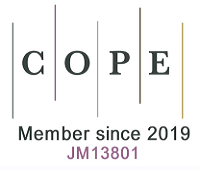REFERENCES
1. Zhou N, Chen J, Ling Z, et al. Aryl hydrocarbon receptor sulfenylation promotes glycogenolysis and rescues cancer chemoresistance. J Clin Invest. 2023;133:e170753.
2. Qiu H, Cao S, Xu R. Cancer incidence, mortality, and burden in China: a time-trend analysis and comparison with the United States and United Kingdom based on the global epidemiological data released in 2020. Cancer Commun. 2021;41:1037-48.
3. Jensen JL, Bobek O, Chan ICC, et al. Clonal hematopoiesis and clinical outcomes in metastatic castration-resistant prostate cancer patients given androgen receptor pathway inhibitors (Alliance A031201). Clin Cancer Res. 2024;30:4910-9.
4. Qiu C, Tang C, Tang Y, et al. RGS5+ lymphatic endothelial cells facilitate metastasis and acquired drug resistance of breast cancer through oxidative stress-sensing mechanism. Drug Resist Updat. 2024;77:101149.
5. Bordone R, Ivy DM, D’Amico R, et al. MYC upstream region orchestrates resistance to PI3K inhibitors in cancer cells through FOXO3a-mediated autophagic adaptation. Oncogene. 2024;43:3349-65.
6. Zhou Z, Luo W, Zheng C, et al. Mitochondrial metabolism blockade nanoadjuvant reversed immune-resistance microenvironment to sensitize albumin-bound paclitaxel-based chemo-immunotherapy. Acta Pharm Sin B. 2024;14:4087-101.
7. Barnieh FM, Morais GR, Loadman PM, Falconer RA, El-Khamisy SF. Hypoxia-responsive prodrug of ATR inhibitor, AZD6738, selectively eradicates treatment-resistant cancer cells. Adv Sci. 2024;11:e2403831.
8. Kristensen LS, Jakobsen T, Hager H, Kjems J. The emerging roles of circRNAs in cancer and oncology. Nat Rev Clin Oncol. 2022;19:188-206.
9. Wang X, Hua J, Li J, et al. Mechanisms of non-coding RNA-modulated alternative splicing in cancer. RNA Biol. 2022;19:541-7.
10. Chen LL. The expanding regulatory mechanisms and cellular functions of circular RNAs. Nat Rev Mol Cell Biol. 2020;21:475-90.
11. Peng D, Wei C, Jing B, Yu R, Zhang Z, Han L. A novel protein encoded by circCOPA inhibits the malignant phenotype of glioblastoma cells and increases their sensitivity to temozolomide by disrupting the NONO-SFPQ complex. Cell Death Dis. 2024;15:616.
12. Tang X, Guo M, Zhang Y, Lv J, Gu C, Yang Y. Examining the evidence for mutual modulation between m6A modification and circular RNAs: current knowledge and future prospects. J Exp Clin Cancer Res. 2024;43:216.
13. Zhou Y, Wei C, Xu Y, Wang J, Zhang C, Jin Y. Exosomal circRNAs: a future star in colorectal cancer. Curr Cancer Drug Targets. 2024; doi: 10.2174/0115680096323472240710101854.
14. Xu T, He B, Sun H, et al. Novel insights into the interaction between N6-methyladenosine modification and circular RNA. Mol Ther Nucleic Acids. 2022;27:824-37.
15. Chen L, Huang C, Shan G. Circular RNAs in physiology and non-immunological diseases. Trends Biochem Sci. 2022;47:250-64.
16. Li B, Zhu L, Lu C, et al. circNDUFB2 inhibits non-small cell lung cancer progression via destabilizing IGF2BPs and activating anti-tumor immunity. Nat Commun. 2021;12:295.
17. Wang C, Liu WR, Tan S, et al. Characterization of distinct circular RNA signatures in solid tumors. Mol Cancer. 2022;21:63.
18. Xu C, Jun E, Okugawa Y, et al. A circulating panel of circRNA biomarkers for the noninvasive and early detection of pancreatic ductal adenocarcinoma. Gastroenterology. 2024;166:178-90.e16.
19. Xie F, Liu S, Wang J, et al. deepBase v3.0: expression atlas and interactive analysis of ncRNAs from thousands of deep-sequencing data. Nucleic Acids Res. 2021;49:D877-83.
20. Ding N, You AB, Yang H, et al. A tumor-suppressive molecular axis EP300/circRERE/miR-6837-3p/MAVS activates type I IFN pathway and antitumor immunity to suppress colorectal cancer. Clin Cancer Res. 2023;29:2095-109.
21. Li J, Wang X, Shi L, et al. A mammalian conserved circular RNA circLARP1B regulates hepatocellular carcinoma metastasis and lipid metabolism. Adv Sci. 2024;11:e2305902.
22. Gao X, Xia X, Li F, et al. Circular RNA-encoded oncogenic E-cadherin variant promotes glioblastoma tumorigenicity through activation of EGFR-STAT3 signalling. Nat Cell Biol. 2021;23:278-91.
23. Fu M, Gao Q, Xiao M, et al. Extracellular vesicles containing circMYBL1 induce CD44 in adenoid cystic carcinoma cells and pulmonary endothelial cells to promote lung metastasis. Cancer Res. 2024;84:2484-500.
24. Wong CH, Lou UK, Fung FK, et al. CircRTN4 promotes pancreatic cancer progression through a novel CircRNA-miRNA-lncRNA pathway and stabilizing epithelial-mesenchymal transition protein. Mol Cancer. 2022;21:10.
25. Yang Y, Luo D, Shao Y, et al. circCAPRIN1 interacts with STAT2 to promote tumor progression and lipid synthesis via upregulating ACC1 expression in colorectal cancer. Cancer Commun. 2023;43:100-22.
26. Huang B, Ren J, Ma Q, et al. A novel peptide PDHK1-241aa encoded by circPDHK1 promotes ccRCC progression via interacting with PPP1CA to inhibit AKT dephosphorylation and activate the AKT-mTOR signaling pathway. Mol Cancer. 2024;23:34.
27. Ma Q, Yang F, Huang B, et al. CircARID1A binds to IGF2BP3 in gastric cancer and promotes cancer proliferation by forming a circARID1A-IGF2BP3-SLC7A5 RNA-protein ternary complex. J Exp Clin Cancer Res. 2022;41:251.
28. Du J, Lan T, Liao H, et al. CircNFIB inhibits tumor growth and metastasis through suppressing MEK1/ERK signaling in intrahepatic cholangiocarcinoma. Mol Cancer. 2022;21:18.
29. Xie M, Yu T, Jing X, et al. Exosomal circSHKBP1 promotes gastric cancer progression via regulating the miR-582-3p/HUR/VEGF axis and suppressing HSP90 degradation. Mol Cancer. 2020;19:112.
30. Li R, Tian X, Jiang J, Qian H, Shen H, Xu W. CircRNA CDR1as: a novel diagnostic and prognostic biomarker for gastric cancer. Biomarkers. 2023;28:448-57.
31. He J, Lv X, Zeng Z. A potential disease monitoring and prognostic biomarker in cervical cancer patients: the clinical application of circular RNA_0018289. J Clin Lab Anal. 2020;34:e23340.
32. Tian M, Chen R, Li T, Xiao B. Reduced expression of circRNA hsa_circ_0003159 in gastric cancer and its clinical significance. J Clin Lab Anal. 2018;32:e22281.
33. Yao JT, Zhao SH, Liu QP, et al. Over-expression of CircRNA_100876 in non-small cell lung cancer and its prognostic value. Pathol Res Pract. 2017;213:453-6.
34. Zhang X, Wang S, Wang H, et al. Circular RNA circNRIP1 acts as a microRNA-149-5p sponge to promote gastric cancer progression via the AKT1/mTOR pathway. Mol Cancer. 2019;18:20.
35. Chen SW, Zhu SQ, Pei X, et al. Cancer cell-derived exosomal circUSP7 induces CD8+ T cell dysfunction and anti-PD1 resistance by regulating the miR-934/SHP2 axis in NSCLC. Mol Cancer. 2021;20:144.
36. Liu J, Kong L, Bian W, Lin X, Wei F, Chu J. circRNA_0001006 predicts prognosis and regulates cellular processes of triple-negative breast cancer via miR-424-5p. Cell Div. 2023;18:7.
37. Wang X, Zhang Y, Huang L, et al. Decreased expression of hsa_circ_001988 in colorectal cancer and its clinical significances. Int J Clin Exp Pathol. 2015;8:16020-5.
38. Ding M, Dai D, Yang W, Geng C, Cui G. Has_circ_0048764 promotes breast cancer progression by sponging miR-578 and regulating HMGA2 expression. Nucleosides Nucleotides Nucleic Acids. 2023;42:448-63.
39. Dhanyamraju PK. Drug resistance mechanisms in cancers: execution of pro-survival strategies. J Biomed Res. 2024;38:95-121.
40. Xie R, Cheng L, Huang M, et al. NAT10 drives cisplatin chemoresistance by enhancing ac4C-associated DNA repair in bladder cancer. Cancer Res. 2023;83:1666-83.
41. Tang H, Huang X, Wang J, et al. circKIF4A acts as a prognostic factor and mediator to regulate the progression of triple-negative breast cancer. Mol Cancer. 2019;18:23.
42. You X, Guo W, Wang L, et al. Subcellular distribution of RAD23B controls XPC degradation and DNA damage repair in response to chemotherapy drugs. Cell Signal. 2017;36:108-16.
43. Wang X, Zhang J, Cao G, Hua J, Shan G, Lin W. Emerging roles of circular RNAs in gastric cancer metastasis and drug resistance. J Exp Clin Cancer Res. 2022;41:218.
44. Gong J, Han G, Chen Z, et al. CircDCAF8 promotes the progression of hepatocellular carcinoma through miR-217/NAP1L1 axis, and induces angiogenesis and regorafenib resistance via exosome-mediated transfer. J Transl Med. 2024;22:517.
45. Hua J, Wang X, Ma L, et al. CircVAPA promotes small cell lung cancer progression by modulating the miR-377-3p and miR-494-3p/IGF1R/AKT axis. Mol Cancer. 2022;21:123.
46. Zhang P, Sun H, Wen P, Wang Y, Cui Y, Wu J. circRNA circMED27 acts as a prognostic factor and mediator to promote lenvatinib resistance of hepatocellular carcinoma. Mol Ther Nucleic Acids. 2022;27:293-303.
47. Huang W, Yang Y, Wu J, et al. Circular RNA cESRP1 sensitises small cell lung cancer cells to chemotherapy by sponging miR-93-5p to inhibit TGF-β signalling. Cell Death Differ. 2020;27:1709-27.
48. Lin J, Lyu Z, Feng H, et al. CircPDIA3/miR-449a/XBP1 feedback loop curbs pyroptosis by inhibiting palmitoylation of the GSDME-C domain to induce chemoresistance of colorectal cancer. Drug Resist Updat. 2024;76:101097.
49. Pan Z, Zheng J, Zhang J, et al. A novel protein encoded by exosomal circATG4B induces oxaliplatin resistance in colorectal cancer by promoting autophagy. Adv Sci. 2022;9:e2204513.
50. Wang X, Cao Q, Shi Y, et al. Identification of low-dose radiation-induced exosomal circ-METRN and miR-4709-3p/GRB14/PDGFRα pathway as a key regulatory mechanism in Glioblastoma progression and radioresistance: functional validation and clinical theranostic significance. Int J Biol Sci. 2021;17:1061-78.
51. Qu H, Wang Y, Yan Q, et al. CircCDYL2 bolsters radiotherapy resistance in nasopharyngeal carcinoma by promoting RAD51 translation initiation for enhanced homologous recombination repair. J Exp Clin Cancer Res. 2024;43:122.
52. Lin L, Hu P, Luo M, et al. CircNOP14 increases the radiosensitivity of hepatocellular carcinoma via inhibition of Ku70-dependent DNA damage repair. Int J Biol Macromol. 2024;264:130541.
53. Zhang Y, Liu Z, Zhong Z, et al. A tumor suppressor protein encoded by circKEAP1 inhibits osteosarcoma cell stemness and metastasis by promoting vimentin proteasome degradation and activating anti-tumor immunity. J Exp Clin Cancer Res. 2024;43:52.
54. Chen DL, Chen N, Sheng H, Zhang DS. Circular RNA circNCOA3 promotes tumor progression and anti-PD-1 resistance in colorectal cancer. Cancer Drug Resist. 2024;7:9.
55. Hu Z, Chen G, Zhao Y, et al. Exosome-derived circCCAR1 promotes CD8+ T-cell dysfunction and anti-PD1 resistance in hepatocellular carcinoma. Mol Cancer. 2023;22:55.
56. Zheng F, Xu R. CircPVT1 contributes to chemotherapy resistance of lung adenocarcinoma through miR-145-5p/ABCC1 axis. Biomed Pharmacother. 2020;124:109828.
57. Huang M, Li T, Wang Q, et al. Silencing circPVT1 enhances radiosensitivity in non-small cell lung cancer by sponging microRNA-1208. Cancer Biomark. 2021;31:263-79.
58. Tang YF, Liu ZH, Zhang LY, et al. circ_PPAPDC1A promotes Osimertinib resistance by sponging the miR-30a-3p/ IGF1R pathway in non-small cell lung cancer (NSCLC). Mol Cancer. 2024;23:91.
59. Li H, Luo F, Jiang X, et al. CircITGB6 promotes ovarian cancer cisplatin resistance by resetting tumor-associated macrophage polarization toward the M2 phenotype. J Immunother Cancer. 2022;10:e004029.
60. Marino M, Cannarella R, Condorelli RA, Crafa A, La Vignera S, Calogero AE. New insights of target therapy: effects of tyrosine kinase inhibitors on male gonadal function: a systematic review. Clin Genitourin Cancer. 2024;22:102131.
61. Bricker-Anthony R, Koeberl DD, Lipshutz GS, Perna F. Staying on target in gene and cell therapy. Mol Ther. 2024;32:2801-2.
62. Yang WC, Koto M, Ikawa H, et al. Clinical target volume design and dose in carbon-ion radiation therapy for sinonasal mucosal melanoma. Radiother Oncol. 2024;200:110511.
63. Bian Y, Shan G, Bi G, et al. Targeting ALDH1A1 to enhance the efficacy of KRAS-targeted therapy through ferroptosis. Redox Biol. 2024;77:103361.
64. Varshney P, Sharma V, Yadav D, et al. The impacts and changes related to the cancer drug resistance mechanism. Curr Drug Metab. 2023;24:787-802.
65. Adenis A, Ghiringhelli F, Gauthier L, et al. Regorafenib plus FOLFIRINOX as first-line treatment for patients with RAS-mutant metastatic colorectal cancer (FOLFIRINOX-R trial): a dose-escalation study. Cancer Chemother Pharmacol. 2024;94:443-52.
66. Kim HD, Jung S, Lim HY, et al. Regorafenib plus nivolumab in unresectable hepatocellular carcinoma: the phase 2 RENOBATE trial. Nat Med. 2024;30:699-707.
67. Zheng Y, Ye S, Huang S, et al. Lefamulin overcomes acquired drug resistance via regulating mitochondrial homeostasis by targeting ILF3 in hepatocellular carcinoma. Adv Sci. 2024;11:e2401789.
68. Chang MH, Lee J, Han J, et al. Prognostic role of insulin-like growth factor receptor-1 expression in small cell lung cancer. APMIS. 2009;117:861-9.
69. Tognon CE, Sorensen PH. Targeting the insulin-like growth factor 1 receptor (IGF1R) signaling pathway for cancer therapy. Expert Opin Ther Targets. 2012;16:33-48.
70. Yang Z, Wang X, Fu Y, et al. YTHDF2 in peritumoral hepatocytes mediates chemotherapy-induced antitumor immune responses through CX3CL1-mediated CD8+ T cell recruitment. Mol Cancer. 2024;23:186.
71. Low K, Foulkes P, Hills F, Roberts HC, Stordal B. The efficacy of gemcitabine and docetaxel chemotherapy for the treatment of relapsed and refractory osteosarcoma: a systematic review and pre-clinical study. Cancer Med. 2024;13:e70248.
72. Liang T, Dong Y, Cheng I, et al. In situ formation of biomolecular condensates as intracellular drug reservoirs for augmenting chemotherapy. Nat Biomed Eng. 2024;8:1469-82.
73. Han X, Guo J, Li L, et al. Sintilimab combined with anlotinib and chemotherapy as second-line or later therapy in extensive-stage small cell lung cancer: a phase II clinical trial. Signal Transduct Target Ther. 2024;9:241.
74. Borek WE, Nobre L, Pedicona SF, et al. Phosphoproteomics predict response to midostaurin plus chemotherapy in independent cohorts of FLT3-mutated acute myeloid leukaemia. EBioMedicine. 2024;108:105316.
75. Dugo M, Huang CS, Egle D, et al. The immune-related 27-gene signature DetermaIO predicts response to neoadjuvant atezolizumab plus chemotherapy in triple-negative breast cancer. Clin Cancer Res. 2024;30:4900-9.
76. Akkus E, Arslan Ç, Ürün Y. Advancements in platinum chemotherapy for metastatic castration-resistant prostate cancer: insights and perspectives. Cancer Treat Rev. 2024;130:102818.
77. Ying Q, Fan R, Shen Y, et al. Small cell lung cancer-an update on chemotherapy resistance. Curr Treat Options Oncol. 2024;25:1112-23.
78. Lim JKM, Samiei A, Delaidelli A, et al. The eEF2 kinase coordinates the DNA damage response to cisplatin by supporting p53 activation. Cell Death Dis. 2024;15:501.
79. Mann J, Niedermayer K, Krautstrunk J, et al. Combined inhibition of RAD51 and CHK1 causes synergistic toxicity in cisplatin resistant cancer cells by triggering replication fork collapse. Int J Cancer. 2025;156:389-402.
80. Wang P, Ye Y, Chen Z, Li R, Hou G, Liu Z. PFKL promotes cell viability and glycolysis and inhibits cisplatin chemosensitivity of laryngeal squamous cell carcinoma. Biochem Biophys Res Commun. 2024;730:150366.
81. Lu H, Tong W, Jiang M, et al. Mitochondria-targeted multifunctional nanoprodrugs by inhibiting metabolic reprogramming for combating cisplatin-resistant lung cancer. ACS Nano. 2024;18:21156-70.
82. Xiao L, Zhu Y, Xu H, Lin L, Li M, Zhou Y. Circ_0000395 promotes cell growth, metastasis and oxaliplatin resistance by regulating miR-153-5p/MYO6 in colorectal cancer. Pathol Res Pract. 2024;260:155476.
83. Liu D, Wu L, Xu X, et al. Regimens combining radiation and immunotherapy for cancer: latest updates from 2024 ASCO Annual Meeting. J Hematol Oncol. 2024;17:84.
84. Hircock C, Lee SF, Raman S, et al. Bridging the care gap: radiation therapy in elderly and frail cancer patients. Curr Opin Support Palliat Care. 2024;18:276-81.
85. Feng D, Yan Z, Fu B, et al. Phase II study of pegaspargase, etoposide, gemcitabine (PEG) followed by involved-field radiation therapy in early-stage extranodal natural killer/T-cell lymphoma. Hematology. 2024;29:2402102.
86. Sharma D, Khosla D, Meena BL, Yadav HP, Kapoor R. Exploring the evolving landscape of stereotactic body radiation therapy in hepatocellular carcinoma. J Clin Exp Hepatol. 2025;15:102386.
87. Liu K, Hoover AR, Wang L, et al. Localized ablative immunotherapy enhances antitumor immunity by modulating the transcriptome of tumor-infiltrating Gamma delta T cells. Cancer Lett. 2024;604:217267.
88. Li C, Yu X, Han X, et al. Innate immune cells in tumor microenvironment: a new frontier in cancer immunotherapy. iScience. 2024;27:110750.
89. Chen S, Yao C, Tian N, et al. The interplay between persistent pathogen infections with tumor microenvironment and immunotherapy in cancer. Cancer Med. 2024;13:e70154.
90. Liu F, Zhuang W, Song B, et al. MAVS-loaded unanchored Lys63-linked polyubiquitin chains activate the RIG-I-MAVS signaling cascade. Cell Mol Immunol. 2023;20:1186-202.
91. Zhao H, Zhang L, Du D, et al. The RIG-I-like receptor signaling pathway triggered by Staphylococcus aureus promotes breast cancer metastasis. Int Immunopharmacol. 2024;142:113195.
92. Li J, Feng H, Zhu J, et al. Gastric cancer derived exosomal THBS1 enhanced Vγ9Vδ2 T-cell function through activating RIG-I-like receptor signaling pathway in a N6-methyladenosine methylation dependent manner. Cancer Lett. 2023;576:216410.
93. He QQ, Huang Y, Nie L, et al. MAVS integrates glucose metabolism and RIG-I-like receptor signaling. Nat Commun. 2023;14:5343.
94. Bai M, Wang WX, Deng T, Duan JJ, Ba Y. Feasibility and safety of PD-1 blockades among elderly patients with metastatic esophageal squamous cell carcinoma: a real-world study. Drug Des Devel Ther. 2024;18:4135-51.
95. Yan M, Chen X, Li X, et al. Transferrin receptor-targeted immunostimulant for photodynamic immunotherapy against metastatic tumors through β-catenin/CREB interruption. Acta Pharm Sin B. 2024;14:4118-33.
96. Singh A, Mommers-Elshof ETAM, Vijver SV, et al. Leukocyte-associated immunoglobulin-like receptor-1 blockade in combination with programmed death-ligand 1 targeting therapy mediates increased tumour control in mice. Cancer Immunol Immunother. 2024;73:16.
97. Zou Y, Yang A, Chen B, et al. crVDAC3 alleviates ferroptosis by impeding HSPB1 ubiquitination and confers trastuzumab deruxtecan resistance in HER2-low breast cancer. Drug Resist Updat. 2024;77:101126.
98. Yang R, Cui J. Advances and applications of RNA vaccines in tumor treatment. Mol Cancer. 2024;23:226.
99. Li J, Zhou W, Wang H, Huang M, Deng H. Exosomal circular RNAs in tumor microenvironment: an emphasis on signaling pathways and clinical opportunities. MedComm. 2024;5:e70019.
100. Huang X, Song C, Zhang J, Zhu L, Tang H. Circular RNAs in breast cancer diagnosis, treatment and prognosis. Oncol Res. 2023;32:241-9.
101. Cao X, Zhou X, Hou F, et al. ncRNADrug: a database for validated and predicted ncRNAs associated with drug resistance and targeted by drugs. Nucleic Acids Res. 2024;52:D1393-9.
102. Xie J, Ye F, Deng X, et al. Circular RNA: a promising new star of vaccine. J Transl Int Med. 2023;11:372-81.
103. Loan Young T, Chang Wang K, James Varley A, Li B. Clinical delivery of circular RNA: lessons learned from RNA drug development. Adv Drug Deliv Rev. 2023;197:114826.
104. Deng J, Liao S, Chen C, et al. Specific intracellular retention of circSKA3 promotes colorectal cancer metastasis by attenuating ubiquitination and degradation of SLUG. Cell Death Dis. 2023;14:750.
105. Xu J, Ji L, Liang Y, et al. CircRNA-SORE mediates sorafenib resistance in hepatocellular carcinoma by stabilizing YBX1. Signal Transduct Target Ther. 2020;5:298.
106. Lee KH, Kim S, Song J, Han SR, Kim JH, Lee SW. Efficient circular RNA engineering by end-to-end self-targeting and splicing reaction using Tetrahymena group I intron ribozyme. Mol Ther Nucleic Acids. 2023;33:587-98.
107. Feng Z, Zhang X, Zhou J, et al. An in vitro-transcribed circular RNA targets the mitochondrial inner membrane cardiolipin to ablate EIF4G2+/PTBP1+ pan-adenocarcinoma. Nat Cancer. 2024;5:30-46.
108. Zhang Z, Fu Y, Ju X, Zhang F, Zhang P, He M. Advances in engineering circular RNA vaccines. Pathogens. 2024;13:692.
109. Chen R, Wang SK, Belk JA, et al. Engineering circular RNA for enhanced protein production. Nat Biotechnol. 2023;41:262-72.
110. Cheng M, Yu X, Qi S, et al. Development of organ targeting lipid nanoparticles with low immunogenicity and their application in the treatment of pulmonary fibrosis. Angew Chem Int Ed Engl. 2024;63:e202407398.
111. Ferraresso F, Badior K, Seadler M, et al. Protein is expressed in all major organs after intravenous infusion of mRNA-lipid nanoparticles in swine. Mol Ther Methods Clin Dev. 2024;32:101314.
112. Rouatbi N, Walters AA, Costa PM, et al. RNA lipid nanoparticles as efficient in vivo CRISPR-Cas9 gene editing tool for therapeutic target validation in glioblastoma cancer stem cells. J Control Release. 2024;375:776-87.
113. Palanki R, Riley JS, Bose SK, et al. In utero delivery of targeted ionizable lipid nanoparticles facilitates in vivo gene editing of hematopoietic stem cells. Proc Natl Acad Sci U S A. 2024;121:e2400783121.
114. Yang H, Lv D, Qu S, et al. A ROS-responsive lipid nanoparticles release multifunctional hydrogel based on microenvironment regulation promotes infected diabetic wound healing. Adv Sci. 2024;11:e2403219.
115. Varshney K, Mazumder R, Rani A, Pandey P, Ravindra Babu M. Liquid crystalline lipid nanoparticles: emerging trends and applications in skin cancer. Pharm Nanotechnol. 2024; doi: 10.2174/0122117385312450240816055942.
116. Rong J, Liu T, Yin X, et al. Co-delivery of camptothecin and MiR-145 by lipid nanoparticles for MRI-visible targeted therapy of hepatocellular carcinoma. J Exp Clin Cancer Res. 2024;43:247.
117. Wang D, Zhang H, Liao X, et al. Oral administration of Robinia pseudoacacia L. flower exosome-like nanoparticles attenuates gastric and small intestinal mucosal ferroptosis caused by hypoxia through inhibiting HIF-1α- and HIF-2α-mediated lipid peroxidation. J Nanobiotechnology. 2024;22:479.
118. Kassaee SN, Richard D, Ayoko GA, Islam N. Lipid polymer hybrid nanoparticles against lung cancer and their application as inhalable formulation. Nanomedicine. 2024;19:2113-33.
119. Wu W, Zhang J, Cao X, Cai Z, Zhao F. Exploring the cellular landscape of circular RNAs using full-length single-cell RNA sequencing. Nat Commun. 2022;13:3242.
120. Xu C, Zhang L, Wang W, et al. Improving the circularization efficiency, stability and translatability of circular RNA by circDesign. bioRxiv 2023. Available from: https://www.biorxiv.org/content/10.1101/2023.07.09.548293v1. [accessed 26 Mar 2025]
121. Wesselhoeft RA, Kowalski PS, Anderson DG. Engineering circular RNA for potent and stable translation in eukaryotic cells. Nat Commun. 2018;9:2629.
122. Qu L, Yi Z, Shen Y, et al. Circular RNA vaccines against SARS-CoV-2 and emerging variants. Cell. 2022;185:1728-44.e16.
123. Kim M, Jeong M, Hur S, et al. Engineered ionizable lipid nanoparticles for targeted delivery of RNA therapeutics into different types of cells in the liver. Sci Adv. 2021;7:eabf4398.
124. Jung HN, Lee SY, Lee S, Youn H, Im HJ. Lipid nanoparticles for delivery of RNA therapeutics: current status and the role of in vivo imaging. Theranostics. 2022;12:7509-31.
125. Saber N, Senti ME, Schiffelers RM. Lipid nanoparticles for nucleic acid delivery beyond the liver. Hum Gene Ther. 2024;35:617-27.
126. Xu S, Xu Y, Solek NC, et al. Tumor-tailored ionizable lipid nanoparticles facilitate IL-12 circular RNA delivery for enhanced lung cancer immunotherapy. Adv Mater. 2024;36:e2400307.
127. Zhao Q, Liu J, Deng H, et al. Targeting mitochondria-located circRNA SCAR alleviates NASH via reducing mROS output. Cell. 2020;183:76-93.e22.
128. Huang G, Zheng W, Zhou Y, Wan M, Hu T. Recent advances to address challenges in extracellular vesicle-based applications for lung cancer. Acta Pharm Sin B. 2024;14:3855-75.
129. Rehman FU, Liu Y, Zheng M, Shi B. Exosomes based strategies for brain drug delivery. Biomaterials. 2023;293:121949.
130. de Voogt WS, Tanenbaum ME, Vader P. Illuminating RNA trafficking and functional delivery by extracellular vesicles. Adv Drug Deliv Rev. 2021;174:250-64.
131. Kronstadt SM, Jay SM, Jeyaram A. Extracellular vesicle loading via pH-gradient modification. In: Federico M, Ridolfi B, editors. Extracellular vesicles in diagnosis and therapy. New York: Springer US; 2022. pp. 231-9.
132. Chao F, Zhang Y, Lv L, et al. Extracellular vesicles derived circSH3PXD2A inhibits chemoresistance of small cell lung cancer by miR-375-3p/YAP1. Int J Nanomedicine. 2023;18:2989-3006.
133. Yu X, Bai Y, Han B, et al. Extracellular vesicle-mediated delivery of circDYM alleviates CUS-induced depressive-like behaviours. J Extracell Vesicles. 2022;11:e12185.
134. Yang L, Han B, Zhang Z, et al. Extracellular vesicle-mediated delivery of circular RNA SCMH1 promotes functional recovery in rodent and nonhuman primate ischemic stroke models. Circulation. 2020;142:556-74.
135. Zhu Z, Huang J, Li X, et al. Gut microbiota regulate tumor metastasis via circRNA/miRNA networks. Gut Microbes. 2020;12:1788891.
136. Liu CX, Chen LL. Circular RNAs: characterization, cellular roles, and applications. Cell. 2022;185:2016-34.
138. Zhang H, Zhang L, Lin A, et al. Algorithm for optimized mRNA design improves stability and immunogenicity. Nature. 2023;621:396-403.











